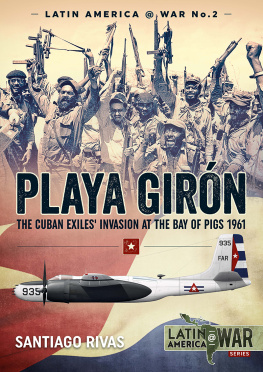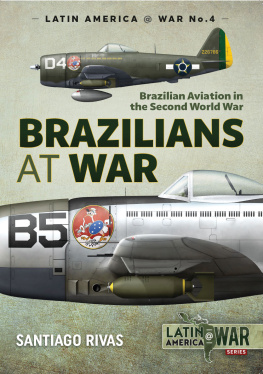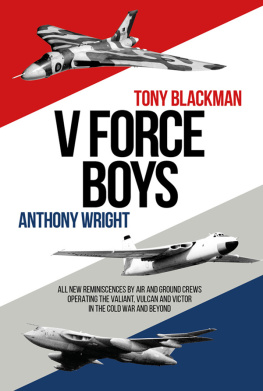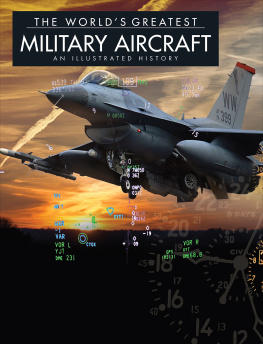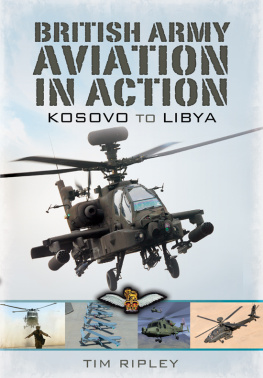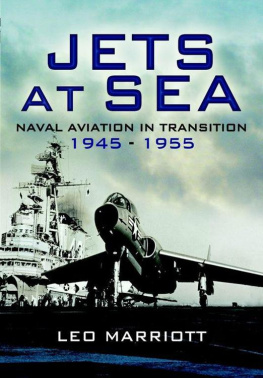Front cover image: The A-4AR Fightinghawk is currently the only fighter aircraft serving with the Argentine Air Force. Plans to buy replacements for the Mirage fleet and the A-4 are progressing slowly, with Chinese and US options being the ones with the most likelihood of success.
Contents page image: A Dassault Super tendard and a Super tendard Modernis in front of the hangar of 2 Escuadrilla Aeronaval de Caza y Ataque. The unit stopped flying the Super tendard in 2011 and now is working to put the Modernis into service.
Published by Key Books
An imprint of Key Publishing Ltd
PO Box 100
Stamford
Lincs, PE19 1XQ
www.keypublishing.com
The right of Santiago Rivas to be identified as the author of this book has been asserted in accordance with the Copyright, Designs and Patents Act 1988 Sections 77 and 78.
Copyright Santiago Rivas, 2021
ISBN 9781913870928
ePub e-book ISBN 9781802821109
All rights reserved. Reproduction in whole or in part in any form whatsoever or by any means is strictly prohibited without the prior permission of the Publisher.
Typeset by SJmagic DESIGN SERVICES, India.
Contents
Introduction
A rgentine military aviation was born on 10 August 1912 when the Escuela de Aviacin Militar (Military Aviation School) was formed by the Argentine Army on an airfield at El Palomar in the suburbs of Buenos Aires. This landing ground belonged to the military school and was loaned in 1910 for the creation of a civil airfield. Shortly after, in 1916, a naval air arm was created. Army aviation continued to grow and in 1945 it was separated from the Army to become an independent force, which became known as the Fuerza Area Argentina. In 1959, the army once again established its own air arm, the Comando de Aviacin de Ejrcito.
Over the years Argentine military aviation developed into one of the most powerful in Latin America. In 1947, not only was it the first to fly jet aircraft, but it was also to build them at the Fbrica Militar de Aviones (FMA), which was controlled by the air force, when the FMA I.Ae.27, designed by Emile Dewoitine, was built and flown.
In 1947, a force of 30 Avro Lincolns and 14 Lancasters arrived in Argentina, creating the biggest bomber force ever to operate in Latin America. This was at a time when British and German influence on the countrys military was huge, the former with equipment and the latter with pilots and engineers.
During the 1960s, US influence gained a hold with F-86F Sabres, A-4B Skyhawks, C-130 Hercules, UH-1 Hueys and many other types, as well as training aircraft, but in the 1970s the fighter force looked to France for re-equipment with the Dassault Mirage III. The navy followed ten years later when the Super tendard was chosen as its replacement for the A-4B Skyhawk.
The three air arms fought in their first conventional conflict during the Malvinas/Falklands War in 1982 against the United Kingdom, when Argentine pilots astonished the world with their skill and bravery. They posed the main threat to the British force, causing severe damage to the Task Force.
With the loss of the war democracy returned to Argentina, but the defence budget was constantly cut equipment was neither replaced nor upgraded and over the years the armed forces lost their potency. The establishment of all three air arms continued to diminish. Ageing equipment and minimal investment over the years meant that their operational status was seriously affected. Flying hours were reduced, which had an impact on the training and preparedness of crews.
By 2016, a change was in the air, with an aim to improve the utilisation of the few resources available and the start of programmes to buy new equipment. The parlous situation of the armed forces was a cause for concern among most of the people of Argentina, who saw their recovery as being of the greatest importance. The COVID-19 pandemic witnessed the military, including all three air arms, make a huge effort to assist the population, which increased their popularity countrywide.
The approval in 2020 of a special fund to start rebuilding the armed forces has been a step in the right direction, with a first investment of about US$300 million expected for 2021. For the Argentine Air Force, its main priority is now to renew its fighter force. Prevented from buying aircraft from Western countries because of the continuing British arms embargo, it is now approaching China to re-equip at least one fighter squadron. But this is only part of a bigger picture where the three air arms need to replace most of their aircraft and systems, a process they consider will take at least two decades for the country to achieve parity with its main neighbours, Chile and Brazil.
Santiago Rivas, Buenos Aires, April 2021.
Part 1 Armed Forces
Chapter 1
Fuerza Area Argentina Argentine Air Force
T he creation of the Escuela de Aviacin Militar (Military Aviation School) on 10 August 1912 marked the beginning of military aviation in Argentina. Occupying a field that belonged to the Military School in the town of El Palomar in the suburbs of Buenos Aires, the small unit was part of the Army and began to train the first Argentine military pilots. It was equipped mainly with French Farmans, Bleriots and Caudrons, some of them locally built.
The small school evolved in 1920 to become the Servicio Aeronutico del Ejrcito (Army Aeronautical Service) with the creation of the second air unit of the force, the Grupo 1 de Aviacin, with fighter, bomber and observation squadrons.
The force continued to grow between 1920 and 1945 under the direction of the War Ministry, but on 4 January 1945 both military and civil aviation organizations were brought together under the Aeronautics Secretary, while all the Army aviation units formed the Fuerza Area Argentina. Only Naval aviation remained independent.
During World War Two, the force was not able to re-equip with modern aircraft, and instead developed local ones like the I.Ae. 22 DL trainer and the twin-engine I.Ae.24 Calqun ground attack aircraft. The end of the war saw the arrival of huge numbers of modern British aircraft in payment for food and other goods supplied to the UK during the war. A consignment of 100 Gloster Meteors, which arrived from 1947, became the most powerful fighter presence in Latin America, while surplus piston-engine aircraft were arriving from the US. Avro Lincoln and Lancaster heavy bombers, transports and trainers, including Italian types like the Fiat G-46 and G-55, also joined the force, to make for a fleet of more than 1,000 aircraft.
On 15 March 1949, a complete reorganization of the force took place, creating brigades on each main base. Until then, units were organized as fighter, bomber and attack regiments and transport, observation and training groups, under the direct control of the main commands. Now, each base became a brigade, with the groups and regiments being part of them.
In 1951, the reorganization was taken a step further when all the groups and regiments became air groups and the brigades became air brigades. The bases that had no air group but had squadrons were called Base Area Militar (BAM, or Military Air Base) while those without units were called Destacamento Aeronutico Militar (DAM, or Military Aeronautical Detachment). Today the force no longer has DAMs, but it still has air brigades and BAMs, maintaining roughly the same organization as in 1951.


